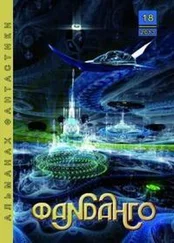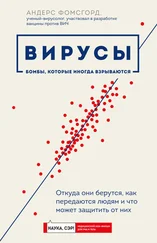ГЛАВА 3. «И разверзаются адовы врата…» Вирус гриппа
1. Iuliano, A., Roguski, K., & Chang, H. (2018). Estimates of global seasonal influenza-associated respiratory mortality: A modelling study. The Lancet (London, England), 391(10127): 1262.
2. Yan, J., Grantham, M., Pantelic, J., Bueno de Mesquita, P., Albert, B., Liu, F., Tellier, Raymond. (2018). Infectious virus in exhaled breath of symptomatic seasonal influenza cases from a college community. Proceedings of the National Academy of Sciences of the United States of America, 115(5): 1081–1086.
3. Taubenberger, J., Reid, A., Krafft, A., Bijwaard, K., & Fanning, T. (1997). Initial genetic characterization of the 1918 „Spanish“ influenza virus. Science (New York, N. Y.), 275(5307): 1793–1796.
4. Heisz, T. (2018). Den spanske syge, da historiens mest dødbringende epidemikom til Danmark (1. udgave, 1. oplag ed.). København: Politiken.
5. Oxford, J., & Gill, D. (2018). Unanswered questions about the 1918 influenza pandemic: Origin, pathology, and the virus itself. The Lancet (London, England). Infectious Diseases, 18(11): 348–354.
6. Oxford, J. (2001). The so-called Great Spanish Influenza Pandemic of 1918 may have originated in France in 1916. Philosophical Transactions of the Royal Society of London. Series B, Biological Sciences, 356(1416): 1857–1859.
7. World Health Organization: Pandemic Influenza Risk Management; http://www.who.int/influenza/preparedness/pandemic/influenza_risk_management_update2017/en/ (besøgt sommer 2019).
8. Abrahamson, J. S. (2011). Inside the 2009 Influenza Pandemic. World Health Publishing Co. Pte. Ltd.
9. Bragstad, K., Martel, C., Thomsen, J., Jensen, K., Nielsen, L., Aasted, B., & Fomsgaard, A. (2011). Pandemic influenza 1918 H1N1 and 1968 H3N2 DNA vaccines induce cross-reactive immunity in ferrets against infection with viruses drifted for decades. Influenza and Other Respiratory Viruses, 5(1): 13–23.
10. Bragstad, K., Vinner, L., Hansen, Mette S., Nielsen, J., & Fomsgaard, A. (2013). Polyvalent influenza A DNA vaccine induces heterologous immunity and protects pigs against pandemic A(H1N1)pdm09 virus infection. Vaccine, 31(18): 2281–2288.
11. Weibel, D., Sturkenboom, M., Black, S., De Ridder, M., Dodd, C., Bonhoeffer, J., Eindhoven MedTech Innovation Center. (2018). Narcolepsy and adjuvanted pandemic influenza A (H1N1) 2009 vaccines – Multi-country assessment. Vaccine, 36(41): 6202–6211. World Health Organization, Strengthening health security by implementing the International Health Regulations (2005); https://www.who.int/ihr/review_committee/en/ (besøgt sommer 2019).
12. World Health Organization: Strengthening health security by implementing the International Health Regulations (2005); who.int/ihr/review_committee/en/ (besøgt sommer 2019).
13. Taubenberger, J., & Morens, D. (2010). Influenza: The Once and Future Pandemic. Public Health Reports, 125(3_suppl): 15–26.
14. Holst, H. V. (2017). Som pesten. København: Gyldendal.
ГЛАВА 4. Плохой и еще хуже. Вирусы оспы и полиомиелита
1. Den Store Danske. USA og Nordamerika, besøgt sommer 2019. (http://denstoredanske.dk/Geografi_og_historie/USA_og_Nordamerika/Nordamerikas_kolonisationshistorie/Den_Fransk-indianske_Krig.).
2. Tucker, J., & Zilinskas, R. (2003). The 1971 smallpox outbreak in the Soviet city of Aralsk: Implications for Variola virus as a bioterrorist threat. Introduction. Critical Reviews in Microbiology, 29(2): 81–95.
3. Heegaard, E., Fomsgaard, A. (2005). Koppeberedskab i Danmark. Ugeskrift for læger, 167(36): 3384–3387.
4. Permin, H., Petersen, P., Høiby, N. (2005). Det sidste tilfælde af kopper i Danmark: og de organisatoriske forhold i 1970. Medicinsk historisk årbog: 115–144.
5. Vestergaard, L., Vinner, L., Andersen, K., & Fomsgaard, A. (2008). Identification of cowpox infection in a 13-year-old Danish boy. Acta Dermato-venereologica, 88(2): 188–190.
6. Polio Eradiction: http://polioeradication.org/
7. Skinhøj, P. (2015). Polio – slutspillet er i gang. Ugeskrift for læger, 177(7): 633.
8. Kay, L. (2014). Polio, senfølger og postpolio. Ugeskrift for læger, 176(7): 639–641.
ГЛАВА 5. Опасные комары. Вирусы чикунгунья, Зика, денге, Усуту, Западного Нила, японский энцефалит и вирус желтой лихорадки
1. Carey, D. (1971). Chikungunya and dengue: A case of mistaken identity? Journal of the History of Medicine and Allied Sciences, 26(3), 243–262.
2. Vu, D. M., Jungkind, D., & LaBeaud, A. D. (2017). Chikungunya Virus. Clinics in Laboratory Medicine, 37(2): 371–382.
3. Dogan, A. D. A., Bunes, K., Skarphédinsson, S. (2013). Tropesygdommen chikungunyafeber er kommet til Europa. Ugeskrift for Læger, 175(24):1716–1719.
4. World Health Organization: Bulletin of the World Health Organization; https://www.who.int/bulletin/online_first/16-171082/en/ (besøgt sommer 2019).
5. Hoen, B., et al. (2018). Pregnancy Outcomes after ZIKV Infection in French Territories in the Americas. The New England Journal of Medicine, 378(11): 985–994.
6. Shapiro-Mendoza, C., Rice, M., Galang, R., Fulton, A., VanMaldeghem, K., Prado, M., Meaney-Delman, D. (2017). Pregnancy Outcomes After Maternal Zika Virus Infection During Pregnancy – U.S. Territories, January 1, 2016 – April 25, 2017. MMWR, Morbidity and Mortality Weekly Report, 66(23): 615–621.
7. Kraemer, M., Reiner, R., Brady, O., Messina, J., Gilbert, M., Pigott, D., Golding, N. (2019). Publisher Correction: Past and future spread of the arbovirus vectors Aedes aegypti and Aedes albopictus. Nature Microbiology, 4(5): 900.
8. World Health Organization: Dengue vaccine update; http://www.who.int/immunization/diseases/dengue/revised_SAGE_recommendations_dengue_vaccines_apr2018/en/ (besøgt sommer 2019).
ГЛАВА 6. Лесной клещ – самое опасное живое существо?
1. Schneider, H. (1932). Die epidemische akute „Meningitis serosa“. Wien. Weiner Klin. 44: 530–352.
2. Zilber, L. A., Soloviev, V.D. (1946). Far eastern tick-borne spring-summer encephalitis. The American Review of Soviet Medicine, 5(Spec. Suppl.): 1–80.
3. Holzmann, H., Aberle, S., Stiasny, K., Werner, P., Mischak, A., Zainer, B., Heinz, F. (2009). Tick-borne encephalitis from eating goat cheese in a mountain region of Austria. Emerging Infectious Diseases, 15(10): 1671–1673.
4. Heinze, D., Gould, E., & Forrester, N. (2012). Revisiting the clinal concept of evolution and dispersal for the tick-borne flaviviruses by using phylogenetic and biogeographic analyses. Journal of Virology, 86(16): 8663-8671.
5. Fertner, M., Mølbak, L., Boye Pihl, T., Fomsgaard, A., & Bødker, R. (2012). First detection of tick-borne „Candidatus Neoehrlichia mikurensis“ in Denmark 2011. Euro Surveillance: Bulletin Européen Sur Les Maladies Transmissibles = European Communicable Disease Bulletin, 17(8): 1–3.
6. Sundin, M. (2018). TBE in children. In Tick-borne encephalitis (TBE). Dobler, G., Erber, W., Schmitt, H. J. (Eds.). Global Health Press: 85–90.
7. Andersen, N., Bestehorn, M., Chitimia-Dobler, L., Kolmos, H., Jensen, P., Dobler, G., & Skarphédinsson, S. (2019). Phylogenetic characterization of tick-borne encephalitis virus from Bornholm, Denmark. Ticks and Tick-borne Diseases, 10(3): 533–539.
8. Randolph, S. (2004). Evidence that climate change has caused ‘emergence’ of tick-borne diseases in Europe? International Journal Of Medical Microbiology, 293(Suppl. 37): 5–15.
9. Fomsgaard, A. (2018). TBE in Denmark. In Thick-borne encephalitis (TBE). Dobler, G., Erber, W., Schmitt, H. J. (Eds.). Global Health Press: 151–155.
Читать дальше
![Андерс Фомсгорд Вирусы. Откуда они берутся, как передаются людям и что может защитить от них [litres] обложка книги](/books/384529/anders-fomsgord-virusy-otkuda-oni-berutsya-kak-pe-cover.webp)


![Евгений Спирица - Боевое НЛП - техники и модели скрытых манипуляций и защиты от них [litres]](/books/396502/evgenij-spirica-boevoe-nlp-tehniki-i-modeli-skryt-thumb.webp)



